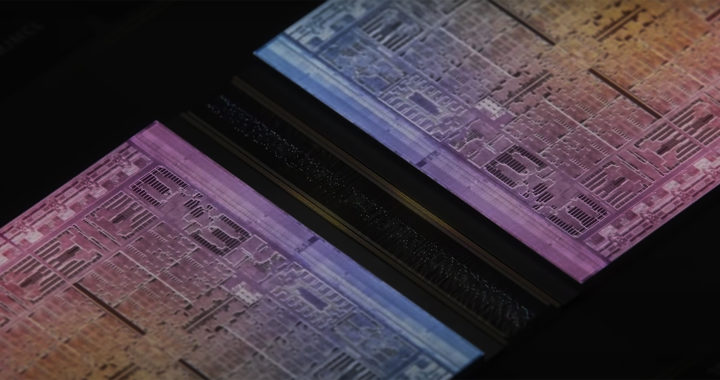It was during an Apple Event held on 8 March 2022 when Apple introduced and described UltraFusion as the underlying technology behind its Apple M1 Ultra—the latest system-on-a-chip under the Apple M1 series of integrated chips.
The technology is relatively straightforward. Apple designed and built the earlier Apple M1 Max chip with an interconnector to enable interconnection with another M1 Max chip. The M1 Ultra is fundamentally two M1 Max chips fused together.
What is UltraFusion and How Does It Work: Interprocessor Interconnection
Chip Packaging and Silicon Interposer
UltraFusion is an interconnection technology with a high-speed interface that enables hardware components to be interconnected with one another. The interconnected components fundamentally work as a single hardware component.
Apple specifically designed the M1 Max chip with a silicon interposer as part of its overall chip packaging. Note that packaging represents a stage in chip fabrication that involves mounting and interconnecting integrated circuits and other components, and encapsulating a semiconductor component or an entire chip into a protective enclosure.
On the other hand, an interposer is a bridge or conduit that enables electric signals to pass through and onto another destination. The interposer used by Apple allows two M1 Max chips to connect over 10000 signals and maintain an interprocessor bandwidth of 2.5TB/s.
UltraFusion is basically an implementation of silicon interposer technology and chip packaging techniques to create an interprocessor interconnection technology. Apple implemented these using one of the advanced packaging technologies developed and deployed by TSMC called chip-on-wafer-on-substrate with silicon interposer or CoWoS-S.
Specific CoWoS-S Technology of TSMC
Taiwan Semiconductor Manufacturing Company is a multinational semiconductor manufacturing company headquartered in Taiwan. It is the most valuable semiconductor company and the largest semiconductor foundry in the world.
Apple is a fabless semiconductor company that outsources chip fabrication capabilities from TSMC. Included in the pool of customers of TSMC are other leading and emerging fabless semiconductor companies such as Advanced Micro Devices, Arm Ltd., Broadcom, HiSilicon, Marvell, MediaTek, Nvidia, Allwinner Technology, and UNISOC.
TSMC has been manufacturing the A series of mobile SoCs used in iPhone and iPad devices since 2011. Apple also tapped this company to launch the M series of desktop-grade SoCs based on reduced instruction set computing and ARM architectures.
For the specific CoWoS-S technology integrated into the M1 Max and used to create the M1 Ultra to form the foundation of the UltraFusion technology of Apple, note that companies such as Advanced Micro Devices, Nvidia, and Fujitsu have been using the same technology to design and build high-performance processors for high-performance computing.
CoWoS-S is specifically a two-point-five dimensional integrated circuit or 2.5D IC through-silicon via or TSV interposer-based multi-chip packaging technology. TSMC developed this technology for high-performance applications.
The design involves incorporating multiple dies side-by-side on a silicon interposer to enable improved interconnect density and performance. Semiconductor chips featuring this technology are bonded through micro-bumps found on the interposer to form a chip-on-wafer or CoW. The CoW has a thin profile to expose TSV perforations.
Capabilities of Apple UltraFusion Technology
Based on the aforesaid, to understand what UltraFusion technology is and better appreciate how it works, it is important to reiterate that it is a packaging technology that uses silicon interposer to implement interprocessor interconnection.
The technology is fundamentally a rebranded CoWoS-S technology. Apple noted that designed the M1 Max with this “secret” feature that serves as a high-speed interconnection interface. The company essentially designed the M1 Max with the intention to fuse it with another M1 Max to create a new chip. The result is the Apple M1 Ultra.
Note that the M1 Ultra technically remains system-on-chip-in-package or SoCiP because it is basically two SoCs fused together. However, because of its interprocessor interconnection technology, the two fused chips seamlessly work as one.
Through UltraFusion, M1 Ultra doubles the specifications and capabilities of an M1 Max. These include double the number of CPU and integrated GPU cores, double the number and processing capabilities of the Neural Engine cores, and double the memory bandwidth. The M1 Ultra also has a total of 114 billion transistors based on the 5nm process node.
